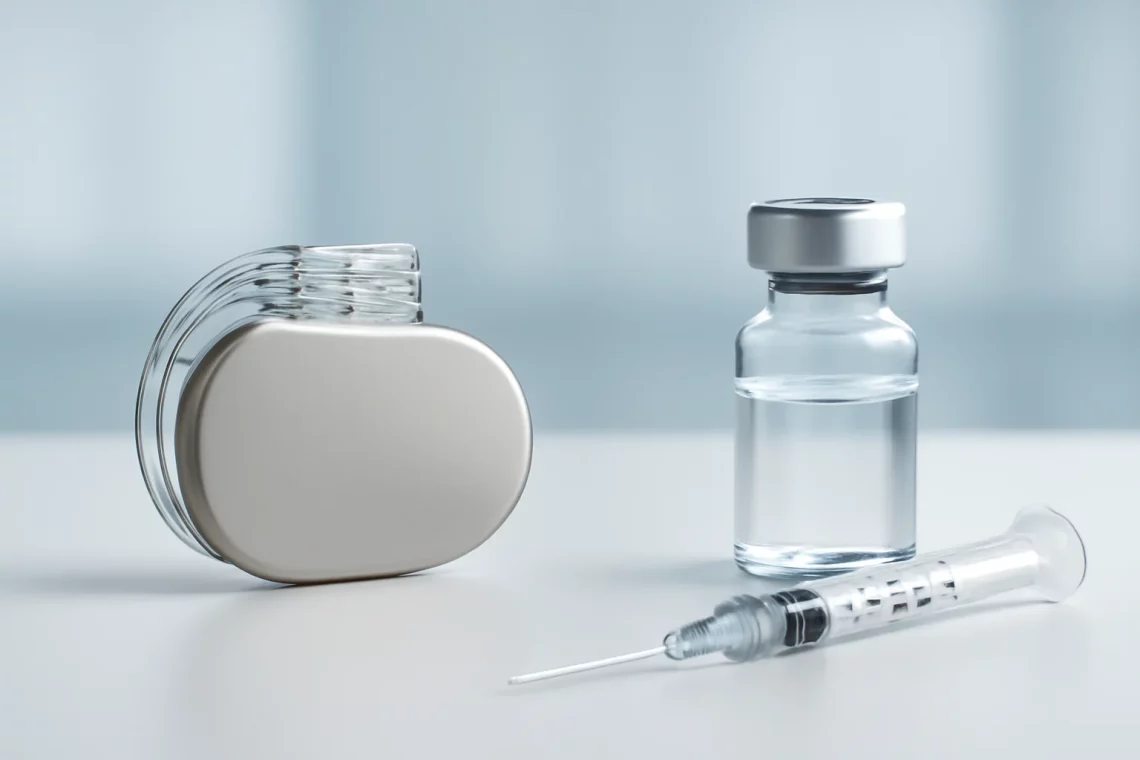
Probuphine vs Sublocade: A Comprehensive Comparison for Treatment Options
The opioid epidemic has become a pressing public health issue, prompting the development of innovative treatment options to combat addiction. Among these options are Probuphine and Sublocade, two medications designed to help individuals struggling with opioid use disorder. Both of these treatments utilize buprenorphine, an opioid partial agonist, but they differ significantly in their administration methods and overall treatment approaches.
Understanding the nuances between these two medications can empower patients, their families, and healthcare providers to make informed decisions regarding treatment plans. With a focus on long-term recovery, these treatments offer unique benefits and challenges that warrant careful consideration. As the landscape of addiction treatment continues to evolve, exploring the effectiveness, administration, and overall impact of Probuphine and Sublocade is crucial for those seeking a path to recovery.
In this article, we will delve into the specifics of each treatment option, shedding light on their mechanisms, benefits, and potential drawbacks. By examining these factors, we hope to provide clarity on how these medications fit into the broader context of opioid addiction treatment.
Mechanism of Action
Probuphine and Sublocade both contain buprenorphine, which plays a central role in their effectiveness as treatments for opioid use disorder. Buprenorphine operates differently than full agonist opioids, providing relief from withdrawal symptoms and cravings without producing the same level of euphoria. This unique mechanism makes it a valuable option for those in recovery.
Probuphine is delivered through a subdermal implant that releases buprenorphine continuously over an extended period, typically six months. This method provides a steady dose of the medication, which helps to stabilize the patient’s condition and reduce the likelihood of misuse. The implant is inserted under the skin of the upper arm by a healthcare professional, allowing for a discreet and convenient option for patients.
On the other hand, Sublocade is administered as a monthly injectable formulation of buprenorphine. This subcutaneous injection allows for a sustained release of the medication into the bloodstream, providing a long-lasting effect that supports patients in their recovery journey. The monthly administration can enhance adherence to treatment, as patients do not need to remember to take a daily dose.
Both treatments aim to mitigate withdrawal symptoms and cravings, but their delivery methods may cater to different patient preferences and lifestyles. For instance, those who prefer a long-term solution without the need for frequent visits to a healthcare provider may find Probuphine more appealing. Conversely, patients who prefer a monthly routine with the flexibility of a healthcare provider’s oversight may lean toward Sublocade.
In summary, the mechanisms of action for Probuphine and Sublocade highlight their shared foundation in buprenorphine, while also showcasing distinct delivery methods that cater to varying patient needs. Understanding these differences is essential for individuals considering their options in opioid addiction treatment.
Effectiveness and Benefits
When evaluating the effectiveness of Probuphine and Sublocade, it is important to consider not only their pharmacological action but also the benefits they offer in the context of treatment for opioid use disorder. Both medications have been shown to significantly reduce opioid cravings and withdrawal symptoms, facilitating a smoother transition into recovery.
Clinical studies have demonstrated that both Probuphine and Sublocade can lead to improved retention rates in treatment programs, which is a critical factor in long-term recovery success. Patients using these medications often report a decreased likelihood of relapse, making them valuable tools in the fight against opioid addiction.
One of the significant advantages of Probuphine is its long-lasting effect, which eliminates the need for daily dosing. This can be particularly beneficial for individuals who may struggle with adherence to a daily medication regimen or those who wish to avoid the stigma associated with taking medication for addiction. The subdermal implant ensures a consistent release of buprenorphine, contributing to stable blood levels and reducing the risk of misuse.
Sublocade also offers unique benefits, particularly in its injectable form. The monthly administration can serve as a reminder for patients to engage with their treatment, fostering a sense of accountability. Additionally, the injection can provide a sense of security for patients, knowing that they are receiving the necessary medication without the daily effort of managing doses.
Both treatments have been associated with positive outcomes, but individual preferences, medical history, and lifestyle factors will ultimately influence which option may be more suitable for a patient. It is essential for individuals considering either treatment to discuss their options with a healthcare provider, who can help tailor a treatment plan that aligns with their specific needs and goals.
Potential Side Effects and Considerations
While Probuphine and Sublocade offer substantial benefits for individuals battling opioid use disorder, it is crucial to recognize the potential side effects and considerations associated with these treatments. Understanding these factors can aid patients and healthcare providers in making informed decisions about their treatment options.
Both medications share similar side effects due to their active ingredient, buprenorphine. Common side effects may include nausea, constipation, fatigue, headache, and insomnia. Although many patients tolerate these side effects, some may experience more severe reactions, necessitating close monitoring by healthcare providers.
For Probuphine, there is a unique consideration regarding the implantation procedure. As a surgical intervention, there is a risk of infection or complications at the insertion site. Patients must ensure that the procedure is performed in a sterile environment and adhere to post-operative care instructions to minimize risks.
Sublocade, as an injectable medication, also carries the potential for site-related reactions, such as pain, swelling, or bruising at the injection site. Patients should communicate any unusual symptoms to their healthcare provider to address them promptly.
Moreover, both treatments require ongoing support and counseling to be most effective. While the medications help manage physical dependence on opioids, comprehensive treatment plans should also include behavioral therapy and support systems to address the psychological aspects of addiction.
It is essential for individuals to have open discussions with their healthcare providers about their medical history, any existing conditions, and potential interactions with other medications. This collaborative approach ensures that patients receive the safest and most effective care tailored to their unique circumstances.
**Disclaimer:** This article is not intended as medical advice. Always consult with a healthcare professional for any medical concerns or questions regarding treatment options.




